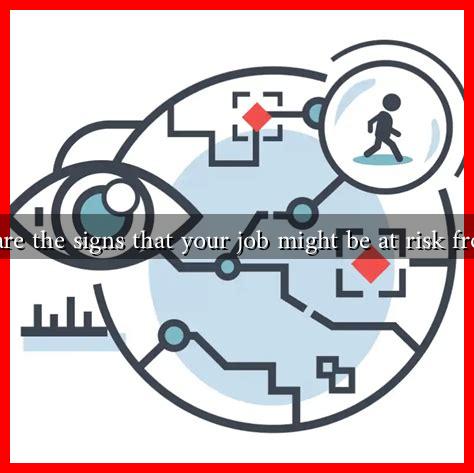-
Table of Contents
What Are the Signs That Your Job Might Be at Risk from AI?
As artificial intelligence (AI) continues to evolve and integrate into various industries, many workers are left wondering about the security of their jobs. While AI has the potential to enhance productivity and efficiency, it also poses a threat to certain job roles. Understanding the signs that your job might be at risk from AI can help you prepare for the future of work. In this article, we will explore key indicators that suggest your position may be vulnerable to automation.
1. Repetitive Tasks and Routine Work
One of the most significant indicators that your job may be at risk from AI is the presence of repetitive tasks. Jobs that involve routine, predictable activities are prime candidates for automation. AI systems excel at performing tasks that require consistency and precision, making them ideal for roles that lack complexity.
- Data entry positions
- Manufacturing assembly line jobs
- Customer service roles with scripted responses
For example, companies like Amazon have implemented AI-driven robots in their warehouses to handle inventory management and order fulfillment, significantly reducing the need for human labor in these areas.
2. Lack of Creative or Critical Thinking
Jobs that do not require creative problem-solving or critical thinking skills are also at risk. AI technologies, particularly machine learning algorithms, can analyze vast amounts of data and make decisions based on patterns without human intervention. If your role primarily involves following established procedures without the need for innovation, it may be susceptible to automation.
- Basic accounting tasks
- Standardized report generation
- Simple legal document review
According to a report by McKinsey, up to 30% of tasks in 60% of jobs could be automated by 2030, highlighting the potential for AI to replace roles that lack complexity.
3. Industry Trends Towards Automation
Monitoring industry trends can provide valuable insights into the potential risks posed by AI. If your industry is rapidly adopting AI technologies, it may indicate that jobs within that sector are at risk. Industries such as manufacturing, retail, and transportation are increasingly integrating AI solutions to streamline operations.
- Self-checkout systems in retail
- Autonomous vehicles in transportation
- AI-driven chatbots in customer service
For instance, the rise of autonomous delivery drones and vehicles is transforming the logistics industry, potentially displacing thousands of delivery drivers in the process.
4. Company Investment in AI Technologies
If your employer is investing heavily in AI technologies, it may signal a shift in the workforce. Companies that prioritize AI development often seek to enhance efficiency and reduce labor costs, which can lead to job displacement. Pay attention to announcements regarding AI initiatives, partnerships, or acquisitions that focus on automation.
- Increased funding for AI startups
- Partnerships with tech companies specializing in AI
- Implementation of AI tools in daily operations
For example, IBM has been at the forefront of AI development with its Watson platform, which has been adopted by various industries to automate tasks traditionally performed by humans.
5. Skills Gap and Lack of Upskilling Opportunities
Finally, if your organization is not providing opportunities for upskilling or reskilling, it may indicate that your job is at risk. As AI technologies evolve, the demand for workers with advanced technical skills will increase. If you find yourself in a role that lacks growth potential or does not align with future job market demands, it may be time to consider upskilling.
- Training programs in AI and machine learning
- Workshops on data analysis and interpretation
- Courses in digital literacy and technology integration
According to a report by the World Economic Forum, over 85 million jobs may be displaced by 2025 due to the rise of AI, emphasizing the importance of continuous learning and adaptation.
Conclusion
As AI continues to reshape the workforce, recognizing the signs that your job may be at risk is crucial for your career development. By identifying repetitive tasks, monitoring industry trends, and seeking opportunities for upskilling, you can better prepare for the future of work. Embracing change and adapting to new technologies will not only enhance your job security but also position you as a valuable asset in an increasingly automated world.
For more insights on the impact of AI on jobs, you can visit World Economic Forum’s Future of Jobs Report.

